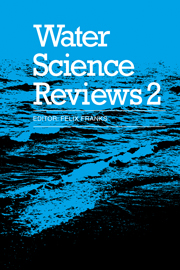The Structure of Ice-Ih
Published online by Cambridge University Press: 05 March 2012
Summary
Introduction
Frozen water, in all its forms ranging from snowflakes to icebergs, has intrigued scientists for many centuries. Already Kepler [1] had speculated on the hexagonal shape of snowflakes, wondering what were the forces that transformed round droplets of water into the beautiful stars that he saw in falling snow. Although he did not resort to an atomic picture, he used a concept with formation by the cold of very small, identical particles, which would grow from an octahedral origin. There would thus be three orthogonal growth directions, leading to the formation of six branches in the star, and a hexagon could then form by a flattening of the star along one of the three-fold axes. Kepler discussed the form of different natural objects, ranging from honeycombs over pomegranates to different crystal forms, and he ended by proposing that different fluids would have in-built abilities that would lead to different forms when frozen.
Since then scientists have been equipped with a multitude of tools that allow them to go well beyond visual observation and speculation in the study of nature, but water in all its forms has always been a subject of interest. In this paper we shall deal with one small domain, namely the structure of ice-Ih. Methods of structure analysis originated in the first quarter of this century.
Information
- Type
- Chapter
- Information
- Water Science Reviews 2Crystalline Hydrates, pp. 1 - 66Publisher: Cambridge University PressPrint publication year: 1986
Accessibility standard: Unknown
Why this information is here
This section outlines the accessibility features of this content - including support for screen readers, full keyboard navigation and high-contrast display options. This may not be relevant for you.Accessibility Information
- 31
- Cited by
